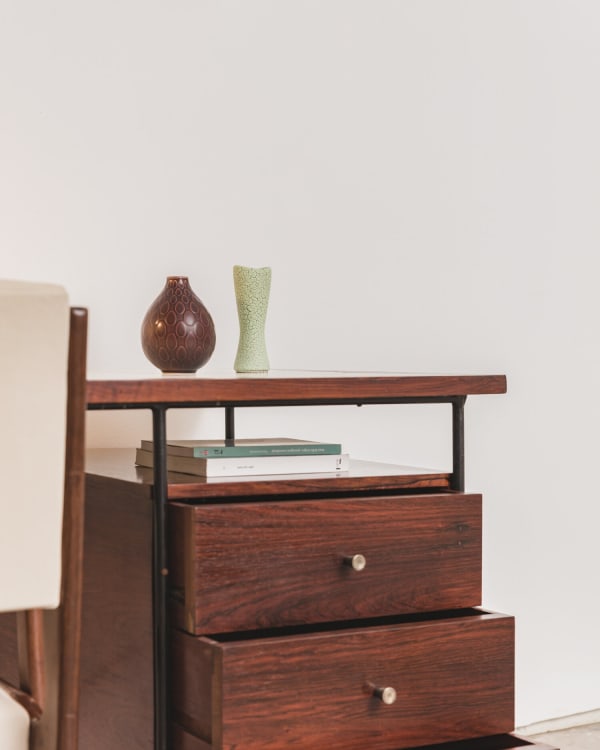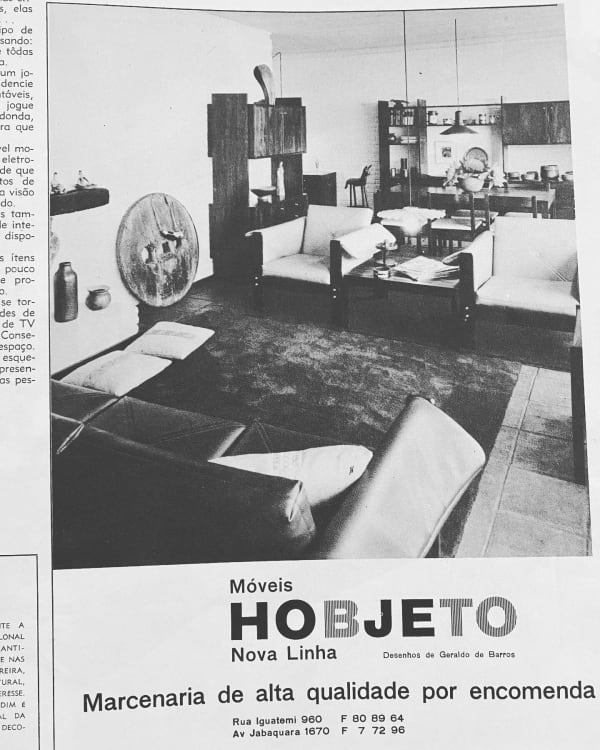-
BIOGRAPHICAL NOTES: GERALDO DE BARROS
AUGUST 25, 2020
-

-
-
HE WAS A LEADER OF THE CONCRETE ART MOVEMENT IN BRAZIL.
He stood out as a founder and member of important movements and artistic associations in São Paulo, Grupo Ruptura, Grupo XV, Grupo Rex, and Cine Clube Bandeirantes. De Barros was known for his trailblazing work in experimental abstract photography and modern ideals, developing works that weren’t determined by styles. Instead, they were moved by a significant interest in exploring new ways of creating and experimenting through materials and techniques.
-

Geraldo de Barros in reunion at Unilabor, 1950s
-
THE PIECES DESIGNED BY DE BARROS USUALLY HAS A LIGHT STRUCTURE IN SOLID ROSEWOOD OR IRON, WHICH BECAME A CHARACTERISTIC OF UNILABOR'S PRODUCTION, WITH FINE SHAPES IN ITS DESIGNS FOR BETTER USE OF ITS MATERIALS. THE FURNITURE WAS COMFORTABLE AND ELEGANT, REFLECTING IN ITS STRUCTURE THE INGENUITY OF THE AUTHOR.
-
Geraldo de Barros designed furniture in such a way that, from the same structure, it was possible to obtain variations of the pieces.
As other designers and factories of the time, he used modulations to achieve the greater rationalization of the stages and production processes, in addition to increasing production and lowering the costs of the final product. The straight lines, sobriety, and functionality were part of the aesthetics innovations, combining the use of new materials, as the iron and the laminate reinvestment - new material at the time which became one of De Barros' marks.
-
In 1964, De Barros went on to found in association with Aloísio Bione, another furniture design company called Hobjeto.
-
According to The Guardian, De Barros was “one of the most influential Brazilian artists of the 20th century.”
-
DE BARROS AND THE PHOTOGRAPHY
When Geraldo de Barros bought his first camera, he read the instruction manual and found information about what to do and what not to do to take a good photo. Going against the guidelines, Geraldo decided to try to do what it was indicated not to do.
Experimentation in photography led him to develop composition processes designed to produce abstract works. The Fotoformas (or ‘Photoforms’) series, made between 1949 and 1952, consists of about 50 experimental photos that mix classic photographic procedures with creative visual experiments. -
 Fotoformas Exhibition, 1951
Fotoformas Exhibition, 1951 -

-
Texts and photograph content are part of Bossa Furniture’s creative production.
The historical files belong to Geraldo de Barros' family and can be accessed through this link.








